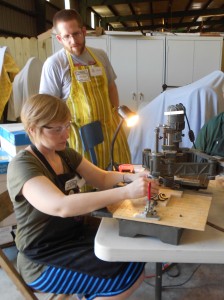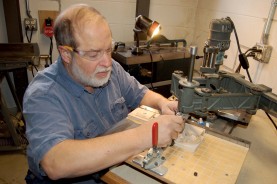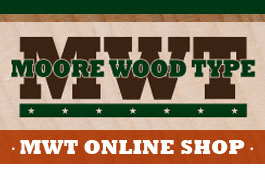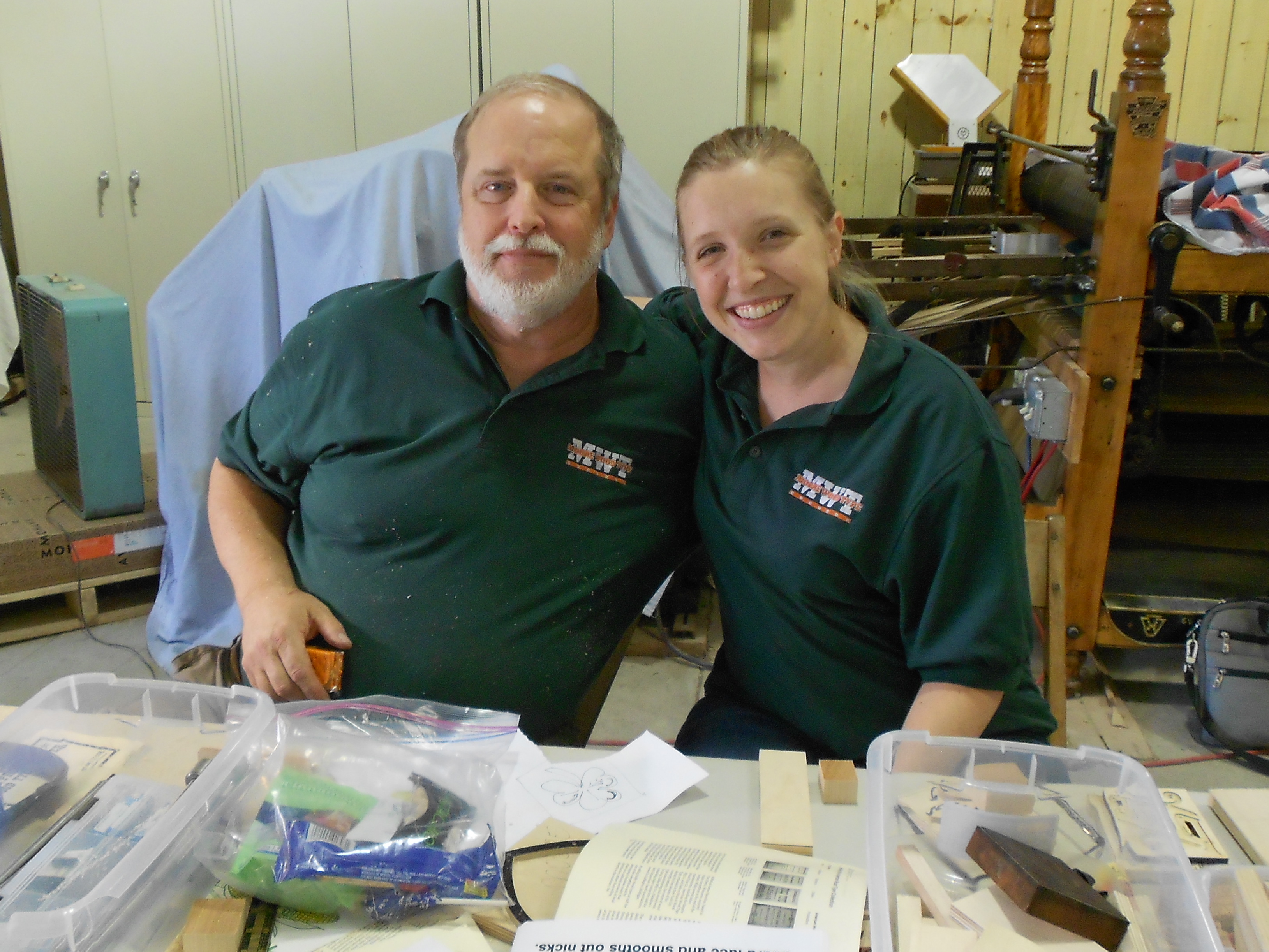
I have been very busy over the past few months.
In early June, I attended the APA ( Amalgated Printers Association) Wayzgoose in Phoenix with afternoon temperatures in June of 114 degrees. I attended several very interesting workshops and sold lots of wood type to a new set of printers and universities in the western United States. 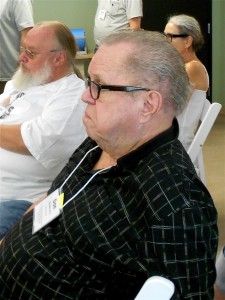
I traveled with Don Black, from Don Black Linecasting, one of the largest resellers of printing equipment and supplies in North America. Everyone I met told me how they had purchased their first type and press from Don.
In late June my daughter Erin and I made the road trip to The Ladies of Letterpress Wayzgoose in Mt. Pleasant, Iowa. Beside a small pantograph wood type cutting machine and tubs of wood and patterns for my workshops, I traveled with another letterpress master, Dave Peat. What a trip. We talked printing and printing history all the way to Iowa and back.
The group had invited me to lecture about the history of wood type and the process I use to cut wood type at their Wayzgoose held at the famous Printer’s Hall in Mt. Pleasant. I had three different workshop groups and sold wood type for two days. I met lots of new printer friends and visited with old friends.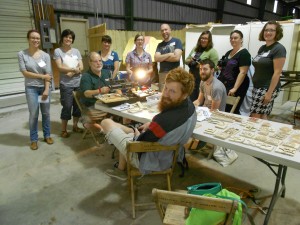
Erin attended her own bookbinding and box making workshops. I even had several friends slip over to my space on their free time to try their hand at cutting wood type. A very busy Summer.
The Hacker Block Leveler I recently acquired from a good friend originally came from the American Type Founders (ATF) auction. He had purchased it to level the feet of European metal type down to the American Standard .918″ type height. When he found out I was reviving the production of wood type, he offered to sell it to me to save the 400 passes I was wasting with my surface sander to bring the glued-up slabs to perfectly flat. That still does not include the 150 additional passes thru the machine to get the mirror polished “friction finish” on the printing surface; starting at 80 grit abrasive, ending with 2000 grit; but it will save me hours of sanding time and help me make better maple slabs.
My daughter Erin, taped me running the Hacker Block Leveler and has produced
the following video on the operation for everyone to see how it works:
The 500 pound machine was brought home in my trailer down a steep, winding, mountain road back to Ohio and into my garage. I spent the next 4 months adding three new motors and a series of pulleys to slow down the feed rates. Every step in the process of converting the leveler from a hand-fed and hand-rotated machine to the “sit back and watch” version I now have was a learning experience.
Thirty five years of Industrial Arts experience and lessons from building my other machines helped. However, I was building something that did not exist in a working, powered form. The block leveler at the Hamilton Wood Type & Printing Museum is a massive machine with a 16 inch horizontal carbide blade and a leather belt drive feed screw 12 feet long.
I have always had the gift of designing furniture, machines, and stage props in my head, including all the steps needed to produce it. Every step in making my block leveler went through many experiments and prototype pieces. I ended up with a bucket full of odd pulleys, belts, Acme threaded shafts and metal bars. Thank goodness there was a Tractor Supply store near my workshop. read more…
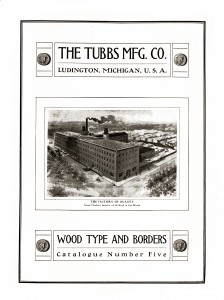 A good friend, who knows of my love for Wood type and type specimen books, loaned me his original copy of the 1905 Tubbs Manufacturing Company Wood Type and Borders book. This is one of the gems in any collection for letterpress printers or old men like me who are cutters of wood type.
A good friend, who knows of my love for Wood type and type specimen books, loaned me his original copy of the 1905 Tubbs Manufacturing Company Wood Type and Borders book. This is one of the gems in any collection for letterpress printers or old men like me who are cutters of wood type.
On one of my trips to the Hamilton Wood Type Museum in Two Rivers, Wisconsin I took research photos of catchwords, stars, and ornaments from their collection of type specimen books. The trouble with taking photos out of books is the lens distortion and lighting. I try to use historical materials in my designs. For several years now I have using Adobe Illustrator to trace and correct these photos and make patterns for cutting wood type. My friend knew it was hard to get usable images in bad lighting.
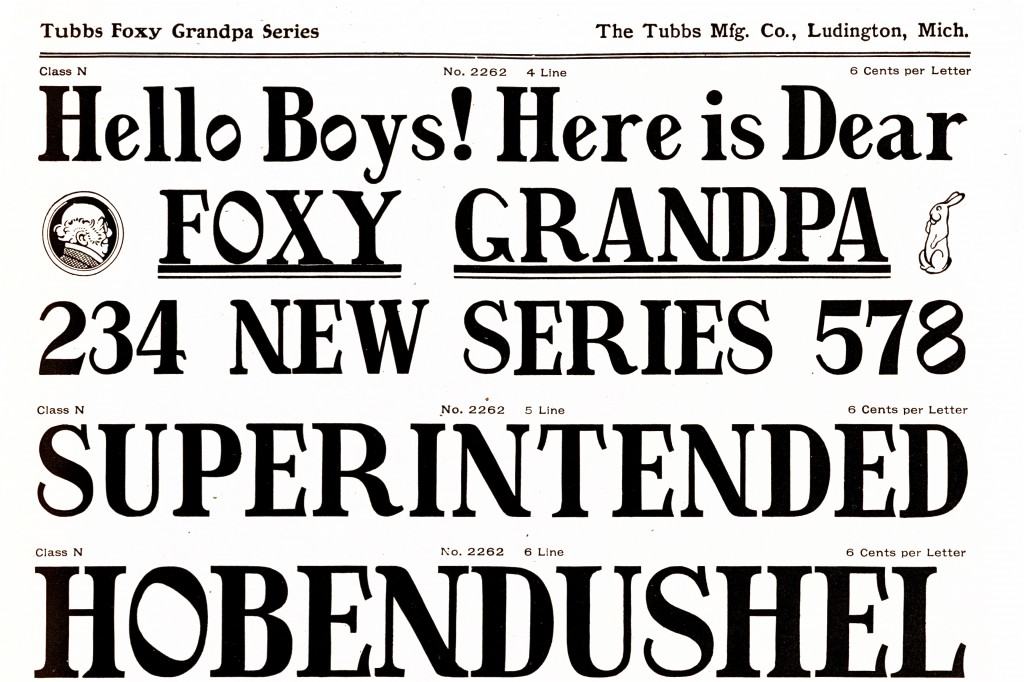 The Tubbs book is full of beautiful old wood type designs. I could take photos with a copy stand and studio lighting. The modern trend in designing computer fonts and giving them unusual names has a historical foundation. Tubbs came up with the Tubbs Foxy Grandpa Series. The page even included a drawing of what they consider to be the “Foxy Grandpa”
The Tubbs book is full of beautiful old wood type designs. I could take photos with a copy stand and studio lighting. The modern trend in designing computer fonts and giving them unusual names has a historical foundation. Tubbs came up with the Tubbs Foxy Grandpa Series. The page even included a drawing of what they consider to be the “Foxy Grandpa”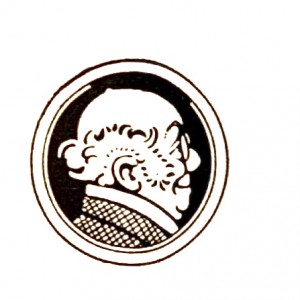
I especially like that the center of the uppercase and lowercase “O” slant in opposite directions. I have already created 7 new catchwords and ornament patterns from the Tubbs #5 Specimen Book. When I finish some existing orders I hope to start cutting more wood type to sell based on this book.



